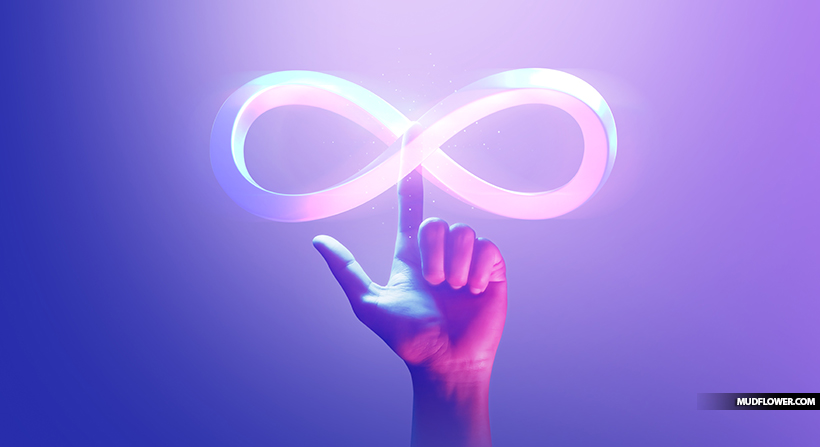Are you ready for the Metaverse?
I remember when I first starting learning how to make websites back in 1994, creating a radio button and a submittable form field was a pretty big deal, and it stayed that way for a good decade. Flash came and went, interactive animation came and went, and Web 1.0 became web 2.0. All in all, 28 years of web design that had predictable and logical progressions is about to give way to some fairly radical change.
The Metaverse is billed as the next generation of the internet, and it has a lot to live up to in terms of expectations. Should they be able to pull it off, and that is a tall order to say the least, a VR-based world where you don’t use the internet so much as you travel through it is fairly mind blowing. Whether or not that succeeds remains to be seen, but one thing is for sure. Web 3.0 is going to allow for the richest expression of content design that has ever been possible, and if you’re a creator, that’s very welcome and exciting news.
The Top Two Tech Trends In 2022: Web 3.0 And The Metaverse
FROM FORBES: Apple, Microsoft, Google, Meta and others are racing to dominate the future metaverse platform by creating new products and operating systems for it. The futurist John Naisbitt is frequently credited for the quote that “the most reliable way to forecast the future is to try to understand the present.” By looking at the tech trends that dominated the media in 2021, it is possible to forecast which trends will stand out in 2022. Among many trends that dominated 2021 are mRNA biotechnology, the space race, work from anywhere and the digital workplace, AI and geoengineering, to name a few. However, two that stood out are Web 3.0 (or decentralization) and the metaverse. These two tech trends should continue to pique the interest of the media, techies and the public at large, and they are the focus and analysis of this article.
Web 3.0
Undoubtedly, the talk about Web 3.0 and decentralization has made it to the forefront due to the craze with nonfungible tokens (NFTs). To understand Web3, let’s look back at previous “versions” of the web. In simple terms, Web 1.0 was about passively browsing the web and consuming content in “read-only” mode. Web 2.0 got consumers more active and participative, as they started to contribute content on social media and interact and collaborate with each other. This is the web “version” we are on right now.
Web 3.0 refers to a decentralized paradigm where content creators can “mint,” own, sell and get paid for their content through NFTs, all using various technology components of blockchain. Simply put, minting NFTs means creating a unique digital asset that can be sold with a token as proof of ownership. Later, the selling of NFT files and the payment for them all happens on a blockchain and in a decentralized manner. Web3 is driven by different concepts and components of blockchain technology such as distributed ledger, wallets, smart contracts and NFTs. To what extent will Web3 “emerge” further in 2022? Let’s start with NFTs. According to Gartner, Inc., NFTs are at the “peak of inflated expectations” on the technology hype cycle. While I do agree with Gartner’s assessment, I still see NFTs and blockchain as a technology surviving the hype and surviving a possible crash in 2022.
Since the creation of Bitcoin in 2009, the blockchain technology that powers Bitcoin has made remarkable progress on the performance side. We have moved from seven transactions per second (TPS) on Bitcoin to 50,000 TPS on Solana. Beyond performance, blockchain has proved its usefulness in financial service, decentralized finance (DeFi), the supply chain, digital health and many other domains. We are also seeing successful examples of blockchain implementation in social media.
However, such solutions have not acquired mass adoption for us to say that we have arrived at Web3. We are far from the mass adoption of blockchain social media similar to the likes of Facebook, Instagram, TikTok or Snapchat. Social media blockchain solutions will allow content creators to mint their content, sell it and get paid for it. Alas, such fast, affordable, easy-to-use and decentralized social media platforms are years and decades away.
Despite the successful examples of blockchain implementations, the technology has some serious challenges and obstacles to enabling Web3.
To start, many blockchain solutions are tied to cryptocurrencies, which puts them at risk with inconsistent regulations in various countries. For example, Bitcoin’s price plummeted when China banned cryptocurrencies in 2021. There’s also the technology fragmentation and the paradox of choice that Gartner articulates well: “Users shouldn’t have to worry about picking the right platform, the right smart contract language, the right system interfaces and the right consensus algorithms.”
However, the main reason for blockchain challenges is a lack of interoperability standards between the various blockchains. According to a report by Deloitte, challenges with blockchain interoperability may be an obstacle to the deployment of various solutions. While there is a blockchain interoperability standard in the works by the IEEE Standards Association, the current solutions are still far from simple or workable. Added to the above is the complexity of the technology and the knowledge needed to mint, share, pay for or own NFTs. Digital immigrants will surely struggle with it. Finally, it is costly to be on the blockchain landscape, and it can be expensive before you offer your NFT for sale. It can get especially expensive and slow on Ethereum to exchange NFTs.
The Metaverse
Merriam-Webster defines the metaverse as “a highly immersive virtual world where people gather to socialize, play and work.” According to Meta CEO Mark Zuckerberg, you can think of the metaverse as “an embodied internet that you’re inside of rather than just looking at,” which he believes “is going to be the successor to the mobile internet.” The metaverse could offer near-life experiences in online meetings, social media interactions with friends and family, medical consultations, shopping and trying on clothes or attending “live” concerts. We are already seeing so-called smart clothes and gadgets that users can wear to stimulate the muscles in order to simulate sensations in the metaverse.
Apple, Microsoft, Google, Meta and others are racing to dominate the future metaverse platform by creating new products and operating systems for it.
However, the metaverse will also face its challenges. Like blockchain, the lack of interoperability and having different operating systems with different AR/VR devices that are not interoperable will challenge adoption. This could be the reason why Jefferies analyst Simon Powell told Yahoo that “a single metaverse could be more than a decade away.” In addition, the metaverse requires expensive gadgets and good tech skills to set up. There is also the data privacy issue and trusting Big Tech with even more personal biometric data.
As we can see, there are many serious challenges to both tech trends, and 2022 might see seedlings for these emerging technologies. Some might die on arrival, others will stand out, and many will take years or decades to blossom and produce some ripening, safe and enjoyable fruits. READ MORE


